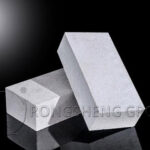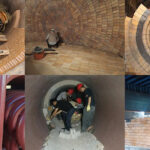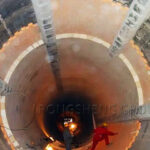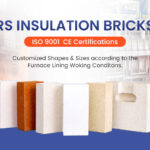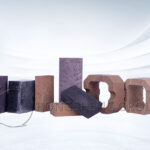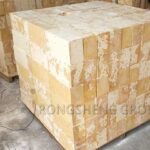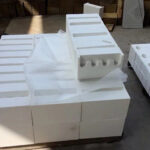High-aluminum poly-light brick is a high-performance lightweight thermal insulation material with excellent performance and wide application prospects. Rongsheng Refractory Materials Manufacturer has an in-depth understanding of the characteristics, application fields, and preparation processes of high-alumina poly-light bricks. It can provide high-performance lightweight insulating materials for high-temperature industrial furnaces, including high-aluminum poly-light bricks, mullite insulation bricks, micro-nano insulation series, etc. High-Performance Lightweight Insulation Materials for Furnace Linings. High-Alumina Poly Light Insulation Brick lightweight insulating material.
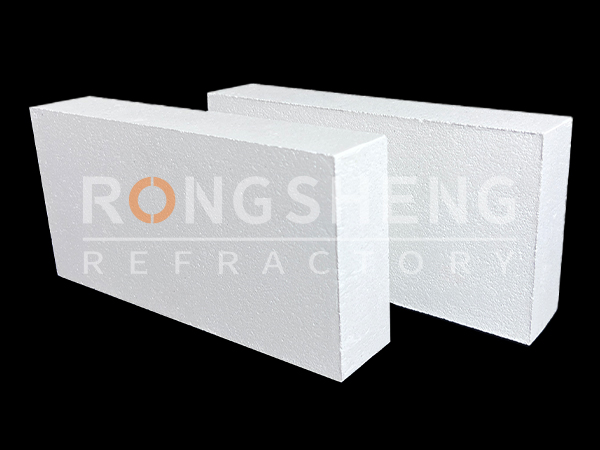
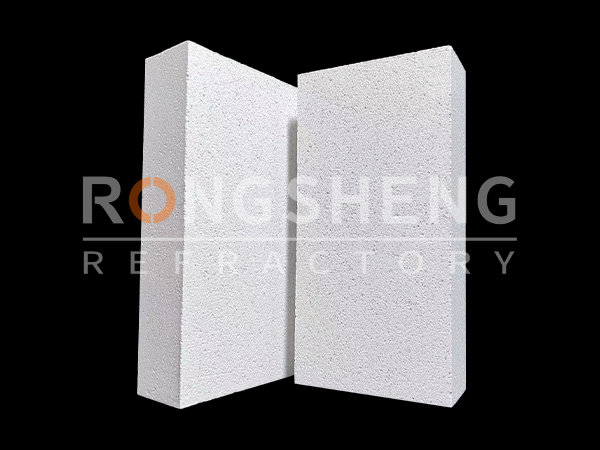
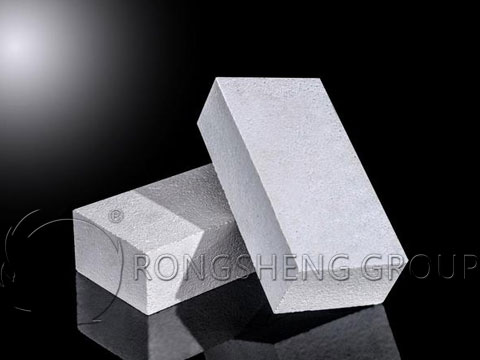
How Often Should Insulation be Replaced?
Characteristics of High Alumina Poly Light Bricks. High-aluminum poly light brick is a kind of lightweight brick made of high-aluminum clinker as the main raw material, adding an appropriate amount of polymer and additives, and sintering at high temperatures. It has the following characteristics: Lightweight and high strength. High-aluminum poly-light bricks are lightweight and high-strength. Its density is only 0.6-1.0g/cm3, but its strength is as high as 5-20MPa.High fire resistance. Lightweight Insulation Materials for Furnace Linings. The fire resistance of high-alumina poly light bricks is as high as 1300°C, which can meet the protection needs of high-rise buildings and high-temperature equipment. Heat insulation. lightweight insulation. High alumina poly-light bricks have excellent thermal insulation properties. Its thermal conductivity is only 0.2-0.4W/(m·K), which can reduce the energy consumption of buildings. Strong corrosion resistance. High alumina poly light bricks can resist the erosion of various chemical substances, such as acids, alkalis, salts, etc. Therefore, it is widely used in the chemical industry and other fields.
Convenient construction. High alumina poly-light bricks have standard sizes and are easy to install and construct. At the same time, its lightweight also facilitates transportation and installation. Application Fields of High Alumina Poly Light Bricks, High alumina poly light bricks are used in kiln linings in metallurgy, machinery, ceramics, chemical, and other industries. It is not corroded by solutions and is used in insulation layers. It is an ideal energy-saving product. RS High-Alumina Poly Light Insulation Brick, Application Advantages of High Alumina Poly Light Bricks, Lightweight insulated lightweight concrete.
Lightweight Insulation Silica Bricks Construction of Thermal Insulation Layer(1) The melting part and the top of the regeneratorBecause the thermal insulation coating is paste-like, and the construction is extremely convenient. Therefore, after the kiln is finished, the expansion joints and the middle part of the dome are sealed and the lightweight insulation bricks are laid. Since a large amount of water vapor will be discharged during the heat preservation and drying process, it is easy to fall off if it is coated too thick at one time. Therefore, the coating thickness of the first layer should be controlled within 10mm, and then the coating thickness can be gradually increased until the specified requirements are met, and the last layer can be smoothed. (2) Sidewall Part. Because the thermal insulation coating is paste-like, the slurry density is relatively high, when the thickness of the vertical surface is thicker at one time, a large amount of water vapor will be released during the internal drying process, and a large area will fall off. Therefore, when the surface temperature exceeds 50℃, the thickness of the first layer should generally not exceed 2-3mm. After the first layer is dry, apply the second layer to a thickness of about 10mm. Lightweight Insulation Materials for Furnace Linings. The third layer can be appropriately thickened at the beginning until it reaches the specified thickness. For the final leveling, and when the moisture volatilizes about 60%, perform a calendering treatment to ensure a smooth and beautiful surface. Such materials generally do not need to be waterproofed for indoor use. From the above two methods, it is known that the refractory insulation materials used in the glass melting furnace are mainly lightweight insulation bricks and insulation coatings.

Difference between Insulating Fire Brick and Refractory Bricks
What is the Difference between Insulating Fire Brick and Refractory Bricks? From the definition, refractory materials are generally divided into two types, unshaped refractory materials, and shaped refractory materials. Shaped refractories generally refer to refractory bricks. Categories Refractory Bricks WikiTags. Difference between Insulating Fire Brick and Refractory Bricks, Insulating Fire Brick, Refractory Bricks.
Compared with traditional refractory bricks, high-alumina poly-light bricks are lighter in weight and are easier to transport and construct. It reduces the overall load of the furnace body and reduces the requirements for the furnace body support structure. Reduce energy consumption. High-alumina poly-light bricks have good thermal insulation properties and can effectively reduce heat transmission and thermal radiation losses. Lightweight Insulation Materials for Furnace Linings. By using high-aluminum polylight bricks, fuel consumption can be reduced and energy efficiency improved. Extended service life. High-alumina polylight bricks have excellent fire resistance and corrosion resistance, which can extend the service life of the furnace body. It can reduce ablation and wear inside the furnace and ensure the stability and safety of the furnace structure. The technology is widely used.
Lightweight Insulating Material from Rongsheng Refractory
Due to the characteristics and advantages of high-alumina poly-light bricks, it has been widely used in various industrial fields. Such as steel, metallurgy, chemical industry, building materials, and other industries, especially suitable for kilns and furnaces in high-temperature environments. Preparation Technology of High Alumina Poly Light Bricks. The preparation process of high-alumina poly light bricks mainly includes the following steps: Ingredients. Mix high-aluminum clinker, polymers, additives, and other raw materials evenly according to a certain proportion. Forming. Put the mixed raw materials into the mold and press it into shape. Dry. The molded green body is dried to remove moisture from the green body. High-temperature sintering. The dried green body is put into a high-temperature kiln for sintering, turning it into a lightweight brick with excellent properties. Finished product inspection. Conduct quality inspection on high-alumina poly-light bricks, and qualified products can be shipped out of the factory. Rongsheng High Alumina Poly Light Brick Manufacturer, As a high-performance lightweight thermal insulation material, high-aluminum polylight bricks have broad application prospects and important practical value. This article introduces the characteristics, application fields, and preparation process of high-aluminum poly-light bricks, providing a reference for readers to understand high-aluminum poly-light bricks. With the continuous development of science and technology, it is believed that high-alumina poly-light bricks will be more widely used in the future. To purchase high-quality lightweight insulation products, please contact us.
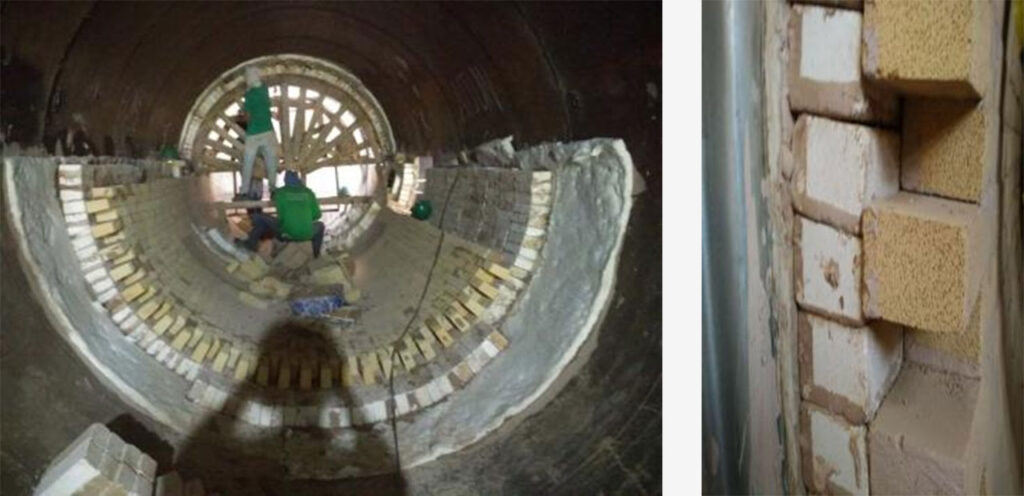
Refractory Insulation Material for Glass Melting Furnace Construction
At present, the construction methods of refractory insulation materials for the melting part of the glass furnace and the top of the regenerator can be divided into two types: cold insulation and hot insulation. Rongsheng Refractory Insulating Materials for Sale. The characteristic of refractory insulation materials is to reduce heat dissipation, improve the thermal efficiency of the furnace, and at the same time ensure the life of the furnace. After the refractory insulation material is used for heat preservation, the temperature of the outer surface of the main body brick will be greatly increased, which requires that the quality of the main body brick must be good, and high-quality refractory mortar must be used. Lightweight Insulation Materials for Furnace Linings. This kind of refractory mortar should have a certain degree of cohesiveness at room temperature so that the bricks will be more firmly bonded during the baking process, and the bricks will not sink or “drop off”. Only in this way can the insulated furnace be in good operating condition and achieve the purpose of insulation.
The specific implementation process of refractory insulation materials for glass furnacesCold Construction(1) The melting part and the top of the regeneratorAfter the masonry is completed, use high-quality silicon mortar slurry to fill the joints and then tighten the strips. Withdraw the fetus. After 24-48h cold observation confirms that it is stable, clean the top of the dome. Pave the stone with high-quality silica mortar with a thickness of 10-20mm. At the same time, a layer of lightweight thermal insulation bricks is laid on the upper part, but thermal insulation bricks are not built at the middle part of the big chute about 1.5-2m wide, and the expansion joints of each chute. (2) Breast wall of the melting partBuild lightweight thermal insulation bricks under cold conditions.
After the heat preservation is implemented, heat dissipation is effectively reduced and the thermal efficiency of the furnace is improved. Learn more about the Construction Of Ceramic Fiber Blanket In Industrial Furnaces:https://www.hy-refractory.com/case/construction-of-ceramic-fiber-blanket-in-industrial-furnace.html. And Get more info on lightweight insulation refractory materials for rotary kilns, etc. Please contact us. We can provide the insulation refractories design and free samples and prices.

